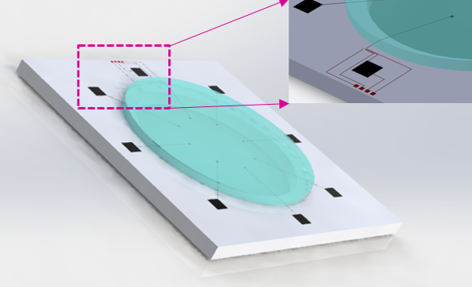MSc thesis project proposal
Selectivity optimization for Organ-on-Chip ion sensors
Organ-on-Chips (OoCs) are dynamic microfluidic platforms which can recapitulate the functions and mimic the physiological microenvironment of a (human) organ. By controlling the OoC micro-environment, cell culturing times can be extended. This possibility is significant especially for drug screening and understanding disease mechanisms. For monitoring and controlling the OoC micro-environment, sensor integration is crucial.
Ion concentration is a prominent biochemical cue to monitor the physiological state in a micro-environment. Ions which arise from various chemical reactions can be monitored and correlations with vital parameters as oxygen and pH levels can be obtained. Optical methods to monitor the changes on ion concentration are bulky and costly. At ECTM we are developing an electrochemical sensor with fully electronic real-time readout based on low-cost CMOS fabrication.
The aim of this project is to optimize the design and selectivity of the ion sensor. To improve selectivity in particular, surface coatings and electrokinetics represent possible options to investigate.
Assignment
This experimental project will involve: • An extensive review of the related state-of-the-art; • Designing and optimizing an effective solution for boosting ion selectivity, possibly including multi-physics simulations; • Microfabrication of the proposed solution(s); • Characterisation of the electrochemical sensor for selectivity; • Reporting.
Daily advisor: Hande AydogmusRequirements
You are an ambitious hands-on master student from microelectronic, mechanical or biomedical engineering, materials science or (applied) physics. You have good communication skills in English, you are independent and also a team player. The graduation project will have a total duration of 9 to 12 months.
If you are eager to work in a motivating atmosphere with highly skilled colleagues, then send us your CV!
Contact
dr. Massimo Mastrangeli
Electronic Components, Technology and Materials Group
Department of Microelectronics
Last modified: 2020-01-22
